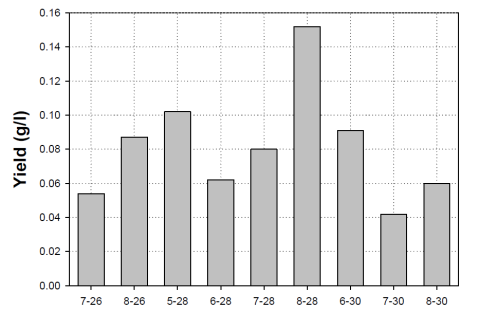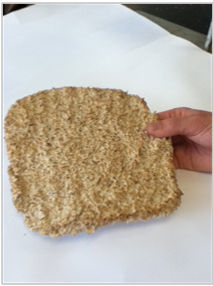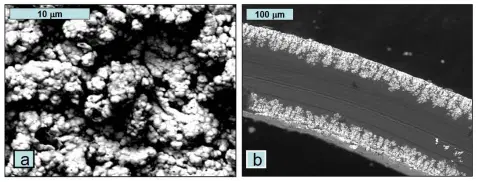Synthesis of Bacterial Cellulose in Low-cost Culture Medium Using Hot Water Extracted Wood Sugars

Figure: Bacterial yield in hot water wood extract after 28 days of cultivation at pH (first number) and temp (second number).
Cellulose is well known as one of the most abundant biodegradable materials in nature and has received considerable interest in both academic and industrial fields. Cellulose synthesized by bacteria is of particular interest over plant cellulose for some applications due to its unique structural and mechanical properties and high purity.
Some high value applications for bacterial cellulose include biomedical applications (scaffold for tissue engineering, wound dressing materials, artificial skin), and production of membranes for high tech applications, such as diaphragms for loudspeakers.
Problem: Bacterial cellulose is currently expensive to produce and purchase however, due to the expense of the media.
Solution: Use inexpensive hot water extracted wood sugars for bacterial cellulose production.
25% Stronger, 100% Biobased Fiber Board
By replacing commonly used formaldehyde-based resins with a new type of binder, researchers at UMaine have developed fiber board building material that is nontoxic, made entirely from renewable materials and is 25% stronger than currently available products. The new binder includes cellulose nanofibrils (CNF), which are wood fibers about 200 micrometers in length and 30 nanometers wide. The CNF is manufactured using a UMaine proprietary mechanical process that is free from harmful chemicals or additives.
Benefits:
- Reduction in health problems and related expenses (up to $48m per year 1) caused by formaldehyde exposure.
- Up to 25% increased product strength.
- All components, precursors and processing materials are renewable and nontoxic.
Zeolite Composite Materials for Waste Odor Control
A composite material for environmental odor control is useful in controlling odors from waste, for example, as an alternative daily cover for landfills and in composting applications. The composite material includes a fiber web and a zeolite containing metals to promote absorption of odorous has.
US Patent 8,100,605
UMaine Reference: 2008-35
Inventors: Karl Bishop, Susan Mackay, Michael Bilodeau
License exculsively to Zeomatrix
Analyze Samples in the Lab or Field with this New Portable Fluorescence Spectrometer
PROBLEM: 1.) Important science topics are sometimes not addressed in high schools because spectroscopy instruments are too expensive to purchase and maintain 2.) Field technicians have to take water and soil samples to a lab for spectroscopy analysis, adding time and complication 3.) Valuable data is not available from remote sensors due to spectrometer power and durability limitations.
SOLUTION: A portable, durable florescence spectrometer that costs 50% less than comparable instruments in most applications due to its novel design and simple components.
Environmentally Friendly Pollutant Remediation, Dye Decolorization
PROBLEM: Organic pollutants and dyes from textile and paper plants in industrial waste streams need remediation.
SOLUTION: Using the chemically enhanced Fenton system, dyes can be remediated quickly in an environmentally safe manner.
New Composites Made from up to 60% Inexpensive, Raw Plant Material
PROBLEM: Composite manufacturers need ways to improve extruded thermoplastics using inexpensive, environmentally friendly ingredients and without slowing process time.
A Stronger, Simpler Fuel Cell Membrane Electrode Assembly
Membrane technology first developed to create artificial muscles may soon be used to improve fuel cells. Pictured above is a fuel cell membrane manufactured using this new method. Resulting surface porosity (a) and a deeply diffused conductive area (light lines in b) increase surface area available for electricity production and create a stonger, simpler, long-lasting membrane.
PROBLEM: Manufacturers of low temperature fuel cells need solutions for improving the strength, durability and manufacturability of a key component, the membrane electrode assembly, or MEA.



